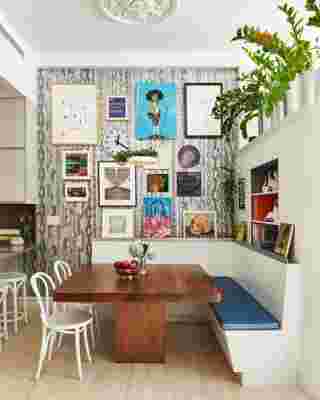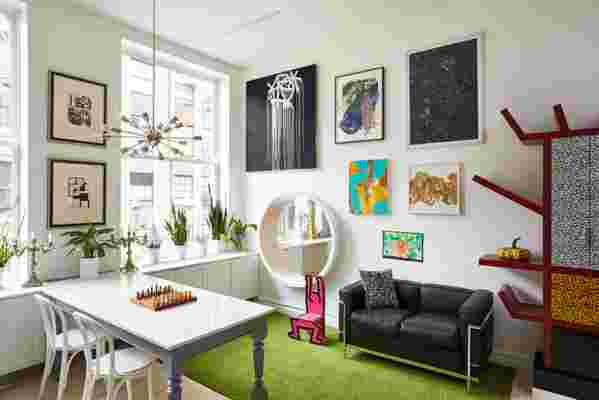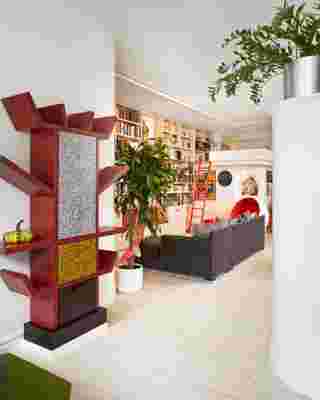“My work is very precise; sometimes it gets out of control, but always within a very controlled system or picture plane,” explains artist Ryan McGinness. “There is this element of chaos, but it is still controlled.” His 2,000-square-foot loft on Walker Street in Tribeca reflects this sensibility, exhibiting a meticulous and disciplined approach in its design, with just enough room for punches of color and tangles of plant life.
The artist and his wife, Trish Goodwin, bought their loft several years before embarking on their ambitious renovation. “Living in the space we got a feel for what worked and what didn’t,” says McGinness, “and a lot of it worked spatially.” Retaining the basic layout with a master bedroom in the back and a living space in the front, they rethought almost every other design aspect while they moved out during a two-year renovation. The artist was involved in every detail, including architectural drawings, furniture design, and art placement.
Acclaimed for its careful layering of pared-down symbols and iconography in intricate, brightly colored paintings, prints, and installations, McGinness’s work is exhibited in museums and galleries worldwide. Andy Warhol is often evoked when discussing his practice because of McGinness’s extensive use of silk-screen printing and his interest in the language of popular culture. Both artists attended Carnegie Mellon, where McGinness studied graphic design and painting. Examples of Warhol’s prints, drawings, and catalogues pepper his living space, but McGinness is quick to point out that rather than appropriating from popular culture for his own art, he uses a lexicon derived from the Virginia Beach surf and skating culture of his youth, and public and corporate signage, as well as art-historical references.

Artworks by Lawrence Weiner, Mel Bochner, Anthony Goicolea, and other art-world notables hang on wallpaper created by McGinness in the eating nook. He also designed the walnut dining table, using cinderblocks in the base. “I knew the girls would be knocking into it all the time,” he says. They often change the books and art leaning against the railing around the booth.
Artwork and ephemera seem to occupy every wall and surface of their home. “We painted everything neutral white besides the wallpaper, knowing that artwork would be at the forefront,” he explains. In addition to works by Warhol, the walls display many trades and gifts from artist friends, including Will Cotton, Shepard Fairey, Anthony Goicolea and Adam Stennett. “It is very important for us to live with the artwork of our friends,” he says. “Not only are you living with them, but the works serve as a trigger for remembering them.”
He also displays drawings by industrial design pioneer Henry Dreyfuss, and works by the influential graphic designers who helped develop ISOTYPEs, a pared-down system of international visual language that he studied in college. McGinness was surprised to discover fine artworks by these designers—including prints by Gerd Arntz, Hans Schmitz, and Augustin Tschinkel that now hang on his walls—because their distilled geometric symbols and shapes so closely reflected his own. “I have become sort of obsessed with this group of artists associated with the Cologne Progressives,” he explains, “and to the best of my ability I want to bring their trajectory back into an art-historical fold.”
The artist carefully built out troughs and platforms for plants throughout the loft, and the unruly leaves cascade over orderly ledges and container tops. The organic plantings interject an element of surprise in an otherwise wholly rational aesthetic.



Leave a Reply